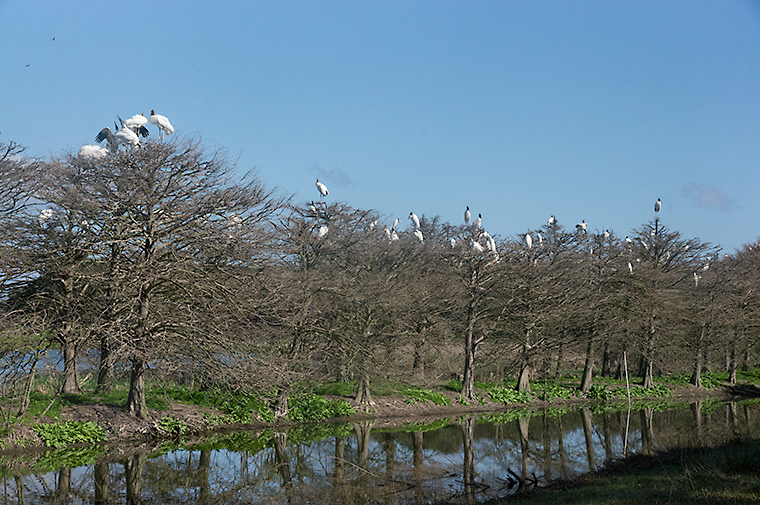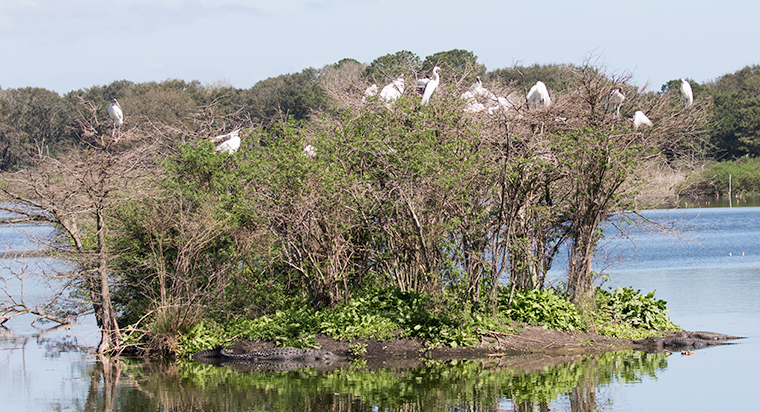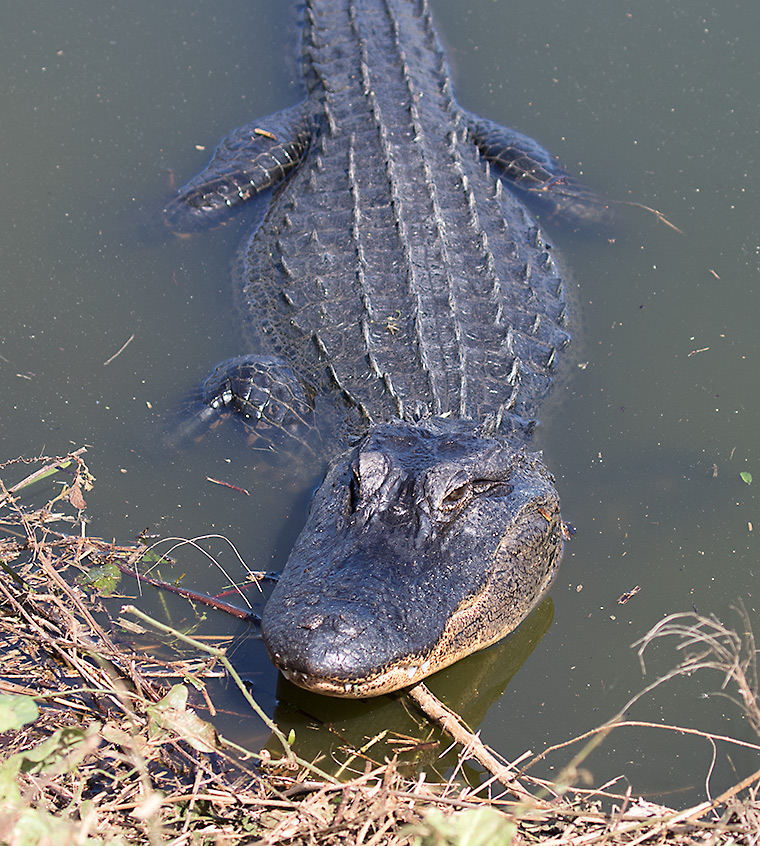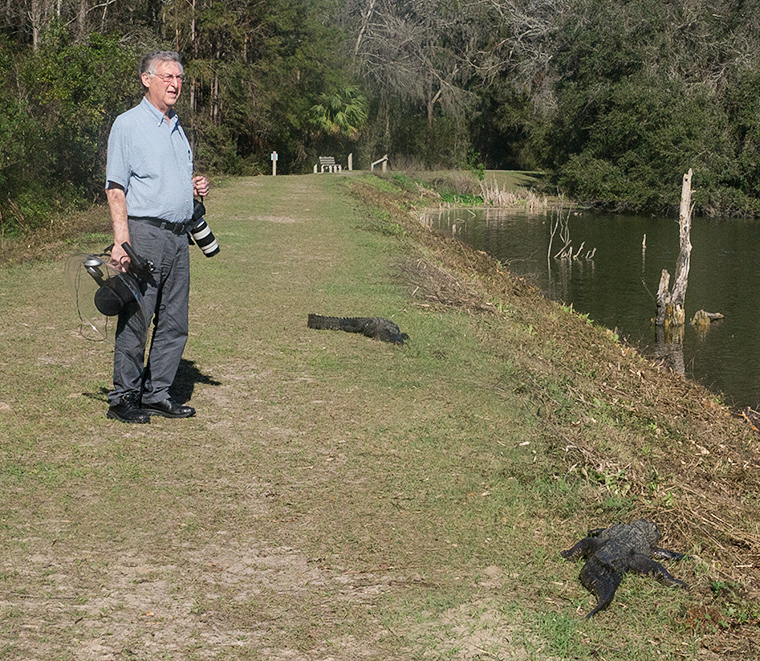A couple of weeks ago we visited a rookery near the Georgia coast. A large number of very interesting birds were gathering there prior to nesting. The nesting sites, as you can see in the photograph above, are in small trees on islands near the shore.
Now why would the birds choose to nest in such a place? There are many acres of forest around the rookery; large trees and suitable nesting sites would seem to be plentiful.
Surprisingly enough this may be the reason. This is an American Alligator (Alligator mississippiensis), and they are plentiful in the large pond where the island rookeries are located. If you look closely at the second photograph in this post, you may be able to make out a couple of Alligators basking on the shore of the small island that is part of the rookery.
Here are couple of small Alligators basking on the dam.
It turns out this island location has advantages for both the birds and the Alligators. With the larger predators having been pretty much wiped out, Raccoons (Procyon lotor) are the main predators of the eggs and young of the birds nesting in the rookery. If they had access to the nesting trees, Raccoons would climb the trees and devour the eggs or small nestlings. However, it would take a brave (or foolish) Raccoon to attempt to swim past the Alligators to gain access to the nests in this rookery.
Now what might be the benefit for the Alligators? It turns out that many large birds, such as the egrets in this rookery, typically lay more eggs than they are able to raise to maturity, particularly in years when food is scarce. The eggs that hatch first have an advantage in size and strength over the later-hatching siblings. Often the first-hatched fledglings will attack the younger birds and drive them from the nest. Fledglings may also accidentally fall from the nest. This provides a source of food for the Alligators lurking below. This type of system where different species are beneficial to each other is sometimes called “mutualism”.
Look for more about the birds in the rookery in future posts.
Discover more from A Naturalist's Journal
Subscribe to get the latest posts to your email.





